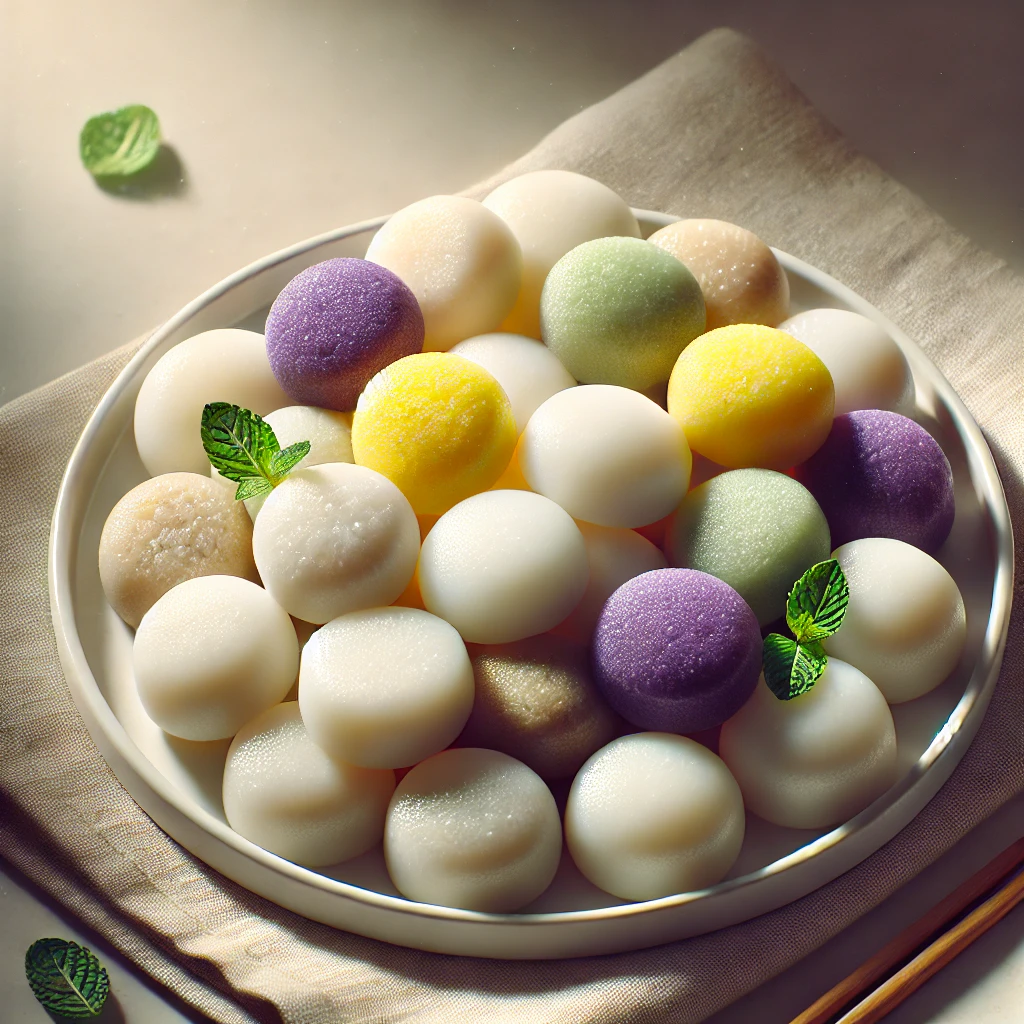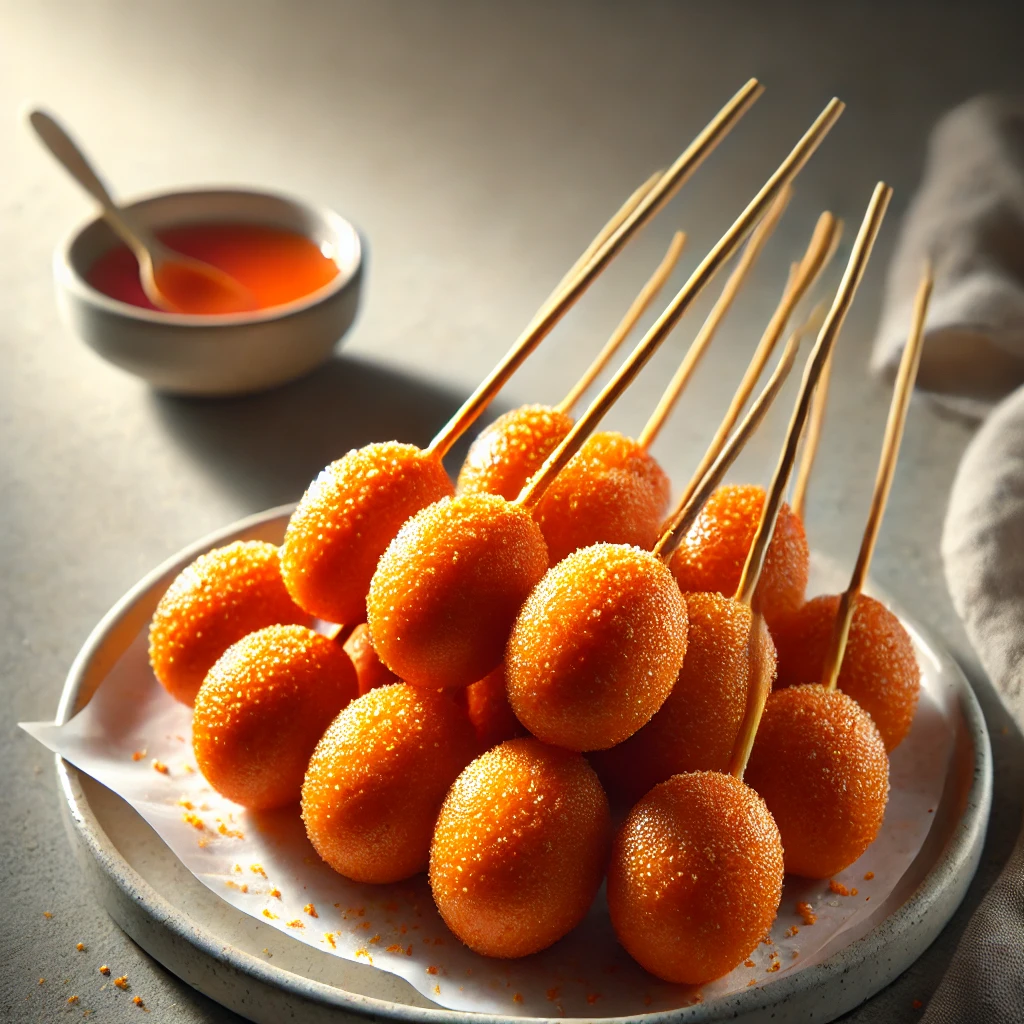Have you ever found yourself wandering through the bustling streets of Hong Kong, Singapore, or Thailand, enticed by the aroma of sizzling street food? If so, chances are you’ve encountered the humble yet irresistible fish ball. These bite-sized morsels of seafood goodness have captured the hearts and taste buds of food lovers across Asia and beyond.
Picture this: a warm, balmy evening in Hong Kong’s Mong Kok district. The neon lights flicker to life as the sun sets, and the air fills with a symphony of sizzling pans and excited chatter. As you navigate the crowded streets, your nose leads you to a small cart where a vendor skillfully tends to a bubbling pot of golden-brown fish balls. The tantalizing aroma draws you in, and before you know it, you’re savoring the perfect blend of springy texture and delicate fish flavor, punctuated by a spicy dipping sauce that dances on your tongue.
Fish balls are more than just a snack; they’re a cultural institution in many parts of Asia. Originating in the coastal regions of China, these versatile seafood bites have evolved into countless variations across different countries. From the streets of Hong Kong to the night markets of Taiwan, each region has put its own spin on this classic treat.
What makes fish balls so special? It’s their ability to transform simple ingredients into something truly extraordinary. Using just a few key components – fresh fish, starch, and seasonings – skilled cooks create a texture that’s simultaneously springy and tender, with a flavor that’s subtle yet satisfying. Whether served in a steaming bowl of noodle soup, skewered and grilled, or simply boiled and paired with a zesty sauce, fish balls offer a delightful culinary experience that’s accessible to all.
In this blog post, we’ll dive deep into the world of fish balls. We’ll explore their history, learn how to make them from scratch, and discover various ways to enjoy this beloved street food. Whether you’re a longtime fan or new to the fish ball scene, get ready for a mouthwatering journey that will leave you craving more.
Best of all, this recipe is versatile enough to accommodate various dietary needs. While traditional fish balls contain fish and sometimes egg, we’ll discuss variations that can make them suitable for pescatarians and even gluten-free diets. So, let’s roll up our sleeves and dive into the fascinating world of fish balls!
Recipe Ingredients
Before we start cooking, let’s gather all the ingredients we’ll need to create these delicious fish balls. Here’s a comprehensive list with measurements:
| Ingredient | Quantity | Notes |
|---|---|---|
| White fish fillets (e.g., cod, haddock, or pollock) | 500g (about 1 lb) | Skinless and boneless |
| Tapioca starch or cornstarch | 60g (1/2 cup) | For binding |
| Egg white | 1 large | Optional, for extra binding |
| Salt | 1 tsp | Adjust to taste |
| White pepper | 1/4 tsp | Freshly ground if possible |
| Sugar | 1/2 tsp | Enhances flavor |
| Sesame oil | 1 tsp | For aroma |
| Ice-cold water | 60ml (1/4 cup) | To maintain texture |
| Green onions | 2 stalks | Finely chopped (optional) |
Substitution suggestions:
- For a gluten-free version, ensure you use tapioca starch or certified gluten-free cornstarch.
- If you prefer a stronger fish flavor, you can substitute half of the white fish with oily fish like mackerel or salmon.
- For a vegan version, replace the fish with firm tofu and omit the egg white. Add 1 tbsp of nutritional yeast for a savory boost.
Recipe Instructions
Now that we have all our ingredients ready, let’s dive into the step-by-step process of creating these delectable fish balls. Follow these instructions carefully, and you’ll be enjoying homemade fish balls in no time!
- Prepare the fish:
- Rinse the fish fillets under cold water and pat them dry with paper towels.
- Cut the fillets into small cubes, about 1-inch in size.
- Place the fish cubes in the freezer for 15-20 minutes to partially freeze them. This will make the next step easier.
- Create the fish paste:
- Once the fish is partially frozen, transfer it to a food processor.
- Pulse the fish until it forms a smooth paste, scraping down the sides as needed.
- Add the egg white (if using), salt, white pepper, sugar, and sesame oil to the food processor.
- Pulse again to combine all ingredients thoroughly.
- Add starch and water:
- Transfer the fish paste to a large mixing bowl.
- Gradually add the tapioca starch or cornstarch, mixing well after each addition.
- Slowly pour in the ice-cold water while stirring continuously. The mixture should become sticky and slightly glossy.
- If using, fold in the chopped green onions at this stage.
- Shape the fish balls:
- Wet your hands with cold water to prevent the mixture from sticking.
- Take a small portion of the fish paste (about 1 tablespoon) and roll it between your palms to form a smooth ball.
- Place the formed balls on a plate lined with parchment paper.
- Repeat until all the mixture is used up.
- Cook the fish balls:
- Bring a large pot of water to a gentle simmer.
- Carefully drop the fish balls into the simmering water.
- Cook for 3-4 minutes, or until they float to the surface.
- Remove the cooked fish balls with a slotted spoon and place them in a bowl of ice water to stop the cooking process.
- Once cooled, drain the fish balls and they’re ready to use!
- Serve and enjoy:
- Fish balls can be enjoyed immediately or stored for later use.
- Serve them with your favorite dipping sauce, add them to soups, or use them in stir-fries.
Pro tip: For an extra springy texture, you can “bounce” the fish paste by repeatedly throwing it back into the mixing bowl. This traditional technique helps develop a more elastic consistency.
Recipe Tips & Variations
To elevate your fish ball game and ensure the best results, consider these helpful tips and exciting variations:
Tips for Success:
- Keep all ingredients and utensils cold to maintain the ideal texture.
- Don’t overmix the fish paste, as this can make the balls tough.
- Test cook one fish ball before shaping the entire batch. This allows you to adjust seasoning if needed.
- For a smoother texture, you can pass the fish paste through a fine-mesh sieve before shaping.
Exciting Variations:
- Curry Fish Balls: Add 1-2 teaspoons of curry powder to the fish paste for a flavorful twist.
- Cheese-Stuffed Fish Balls: Insert a small cube of mozzarella cheese into the center of each ball before cooking.
- Squid Ink Fish Balls: Mix 1 teaspoon of squid ink into the paste for a dramatic black color and subtle ocean flavor.
- Fried Fish Balls: After boiling, let the fish balls cool completely, then deep-fry them for a crispy exterior.
Storage Instructions:
- Cooked fish balls can be stored in an airtight container in the refrigerator for up to 3 days.
- For longer storage, freeze the cooked fish balls on a baking sheet, then transfer to a freezer bag. They’ll keep for up to 3 months.
- To reheat, simply drop frozen fish balls into simmering water or soup until heated through.
Nutritional Information
For those keeping an eye on their dietary intake, here’s the approximate nutritional information for a serving of 4 fish balls (based on the recipe above):
| Nutrient | Amount per Serving |
|---|---|
| Calories | 120 |
| Protein | 15g |
| Carbohydrates | 10g |
| Fat | 2g |
| Fiber | 0g |
| Sodium | 300mg |
Please note that these values may vary slightly depending on the specific fish used and any variations in ingredients.
Conclusion
As we come to the end of our fish ball journey, I’m reminded of a memorable evening I spent in Singapore’s famous Maxwell Food Centre. Surrounded by the lively chatter of locals and tourists alike, I watched in awe as a veteran hawker deftly shaped and cooked batch after batch of perfect fish balls. The simple joy on the faces of those enjoying this humble street food was a testament to its enduring appeal.
Fish balls are more than just a tasty snack; they’re a gateway to understanding the rich culinary traditions of Asia. They represent the ingenuity of street food vendors who transform simple ingredients into something truly special. Whether you’re recreating them at home or sampling them from a bustling night market, each bite of a fish ball is a celebration of flavor, texture, and cultural heritage.
I encourage you to try this recipe and experience the magic of homemade fish balls for yourself. Don’t be afraid to experiment with different seasonings or cooking methods – that’s part of the fun! And once you’ve mastered the basic recipe, why not explore some of the variations we’ve discussed?
If you do give this recipe a try, I’d love to hear about your experience. Did you stick to the traditional version, or did you put your own spin on it? Share your creations and thoughts in the comments below or on our social media channels. Your feedback not only helps us improve our recipes but also inspires other food enthusiasts in our community.
For those of you who’ve caught the street food bug, stay tuned for more exciting recipes from around the world. From Thai mango sticky rice to Mexican elotes, we’ll be exploring a world of flavors right here on our blog. Don’t forget to subscribe to our newsletter for the latest updates and culinary inspirations!
Remember, cooking is an adventure, and every dish tells a story. So go ahead, gather your ingredients, and start your own fish ball story today. Happy cooking, and may your kitchen always be filled with the aroma of delicious experiments!
Disclaimer: This blog post contains information accurate up to 2019. While we strive for accuracy, culinary trends and nutritional understanding may have evolved since then. If you notice any inaccuracies, please report them so we can promptly update our content. Always consult current food safety guidelines when preparing and storing food.




